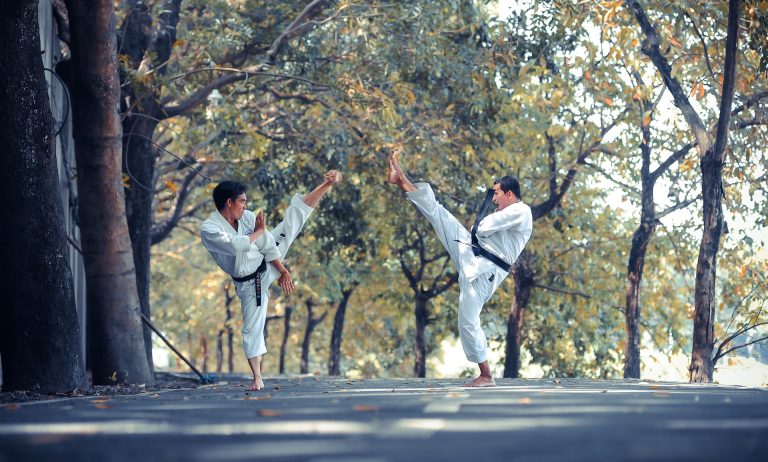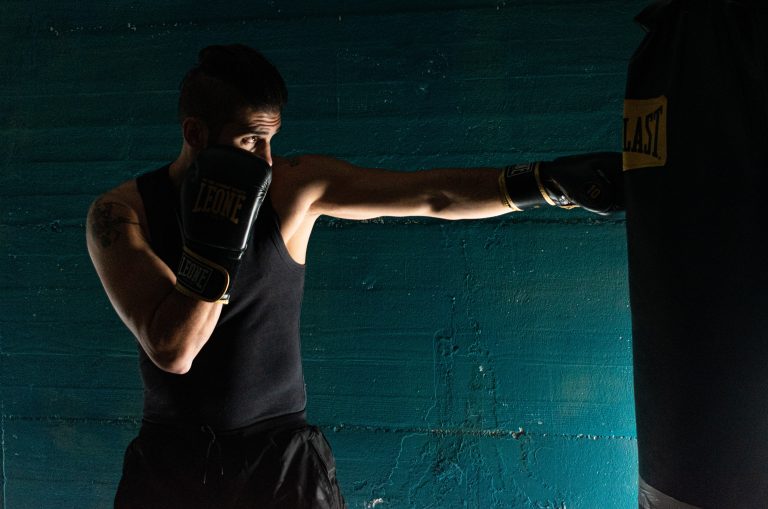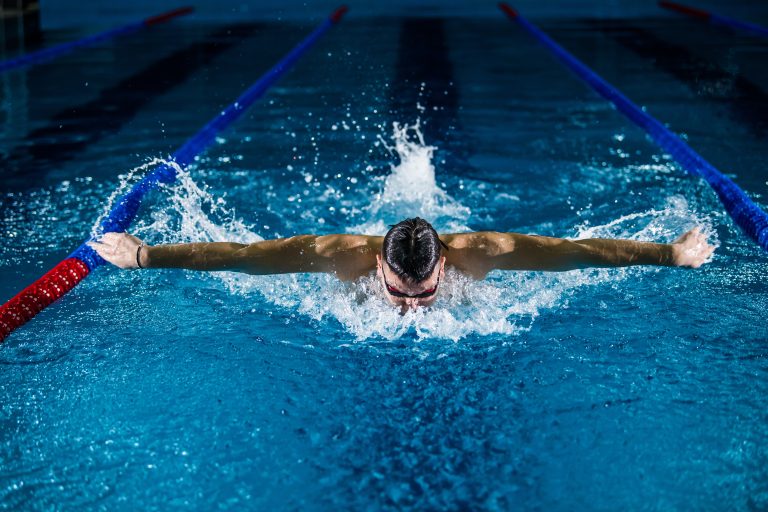Why Karate is Not Stupid: Debunking Misconceptions
Karate is a martial art that originated in Okinawa, Japan in the early 20th century. Despite being around for over 100 years and being practiced by millions of people worldwide, some still believe that karate is a „stupid“ or ineffective form of self-defense. In this blog post, we will explore common misconceptions about karate and provide evidence to prove why it is not only an effective martial art but also a valuable tool for personal growth.
Misconception #1: Karate is Just Kicking and Punching
One of the most common misconceptions about karate is that it is just a series of kicks and punches. While karate does involve striking techniques, it also encompasses throwing, locking, and grappling techniques. Additionally, karate includes the use of various weapons such as the bo, tonfa, and nunchaku. At higher levels, practitioners of karate learn to incorporate strategy and philosophy into their techniques, making it a well-rounded system of self-defense.
Misconception #2: Karate is Only for Fighting
Another common misconception about karate is that it is only useful for fighting. While karate does include techniques for self-defense, it also emphasizes discipline, self-control, and respect. Karate training teaches practitioners to remain calm under pressure, focus their minds, and develop inner strength. These skills are applicable in all areas of life, from school and work to personal relationships.
Misconception #3: Karate is Outdated
Some people argue that karate is outdated and not as effective for self-defense as more modern martial arts like Brazilian Jiu-Jitsu or Mixed Martial Arts (MMA). However, karate has evolved over the years to incorporate practical self-defense techniques that are applicable in today’s world. Many karate schools offer training in realistic self-defense scenarios, such as defending against an attacker with a weapon or multiple attackers.
Misconception #4: Karate is Only for Kids
Karate is often associated with children’s classes, and some people believe that it is only suitable for kids. However, karate is suitable for people of all ages and fitness levels. Many karate schools offer specialized classes for adults, including women’s self-defense classes, senior fitness classes, and cardio kickboxing classes. Karate is a low-impact activity that can be a great way to stay in shape and maintain good health.
Misconception #5: Karate is a Sport
While there are karate competitions, karate is not just a sport. Karate is an art form that emphasizes personal growth and development. Karate training teaches skills beyond just physical techniques, including self-discipline, self-awareness, and spiritual growth. At higher levels of karate training, practitioners can even incorporate meditation and breathing exercises to further enhance their mental and emotional well-being.
Common Misconceptions About Karate
Karate is a popular martial art that originated from Okinawa, Japan. Although it has been around for centuries, there are still many misconceptions about it that lead people to believe that it is a useless practice. In this article, we will address some of the common questions people ask about karate and why these misconceptions are not accurate.
1. Is Karate Just About Breaking Boards?
One of the most common misconceptions about karate is that it is all about breaking boards, bricks, and other objects. While it is true that breaking techniques are a fundamental part of karate, it is not the only focus of the martial art. In fact, many karate styles don’t teach board breaking at all.
Karate is a complete system of martial training that includes striking, blocking, and grappling techniques, as well as conditioning, forms training, and sparring. The focus is on developing physical and mental discipline, improving overall health and fitness, and learning self-defense skills that can be applied in real-life situations.
2. Is Karate Only for Aggressive People?
Another common misconception is that karate is only for aggressive people who like to fight. In reality, karate is a discipline that emphasizes self-control, respect, and compassion. Karate training teaches students to channel their energy and emotions in a positive way and to avoid conflict whenever possible. It is not about being aggressive or violent but rather about developing inner strength and discipline.
3. Is Karate Effective in Self-Defense Situations?
One of the main reasons people study karate is for self-defense purposes. However, some people question whether karate techniques are actually effective in real-life situations. The truth is that karate techniques have been proven to be highly effective in self-defense situations.
The techniques and tactics taught in karate are designed to be simple and direct, focused on delivering the most effective strikes and techniques in the shortest amount of time possible. With consistent training, a karate student can learn how to defend themselves against attackers of all sizes and strength levels.
4. Is Karate a Waste of Time and Money?
Some people believe that karate is a waste of time and money, especially for those who are not interested in becoming professional fighters. However, karate can be a highly rewarding and valuable practice for people of all ages and backgrounds.
Karate training can help you develop physical fitness, mental discipline, and self-confidence. It can also be a fun and engaging way to meet new people and make lifelong connections. While it does require an investment of time and money, the benefits of karate training can far outweigh the costs.
5. Is Karate Only for Kids?
Finally, some people believe that karate is only for kids and that adults should not bother learning it. This is simply not true. Karate is a discipline that can be enjoyed by people of all ages and skill levels.
In fact, many karate schools offer adult programs that cater specifically to the needs and interests of adults, such as self-defense training, stress relief, and fitness. Whether you’re looking to learn a new skill, get in shape, or meet new people, karate can be a rewarding practice for adults and kids alike.
How to Critique a Martial Art: A Step-by-Step Guide
If you’re reading this post, chances are you’ve already formed an opinion about karate. Maybe you’re a traditional martial artist and take offense at the title; perhaps you’ve never stepped foot in a dojo but have some preconceived notions about the martial art. Whatever the case may be, it’s essential to understand how to critique a martial art objectively.
Step 1: Understand the Basics
Before you can critique any martial art, you need to understand its fundamental principles, techniques, and history. For instance, karate is one of the most practiced martial arts globally and typically involves kicks, strikes, and open-handed techniques.
Furthermore, it’s essential to understand that traditional karate has distinct values, including respect, loyalty, and honor, that practitioners strive to embody both inside and outside the dojo. Knowing these basics is crucial in developing an informed critique of the martial art.
Step 2: Consider the Context
The context in which a martial art is practiced can also influence how it’s perceived. For example, karate is generally practiced in a traditional setting, which may not appeal to everyone. Some people may view it as archaic or irrelevant to the modern world.
Alternatively, karate is also popular as a sport, and practitioners can compete at different levels. So, when you’re critiquing karate, keep in mind the context in which it’s practiced and whether it aligns with your values and beliefs.
Step 3: Evaluate the Effectiveness
One of the most crucial aspects of critiquing a martial art is evaluating its effectiveness. Suppose the techniques taught in karate can’t effectively defend an individual in a real-life situation. In that case, it may be viewed as „stupid“ or irrelevant by some people.
To evaluate the effectiveness of karate, consider how it compares to other martial arts in terms of self-defense techniques, sparring, and practical application. There’s no denying that karate has its strengths and weaknesses, like any other martial art, so it’s essential to evaluate it objectively.
Step 4: Analyze the Training Methods
The training methods and techniques used in karate can also have an impact on how it’s perceived. For instance, traditional karate places great emphasis on katas or forms that enable practitioners to hone their techniques.
On the other hand, some modern karate schools emphasize sparring or live drills to simulate real-life situations. By analyzing the training methods, you can determine if they align with your preferences and whether they’re effective.
Step 5: Consider the Culture
Finally, the culture of the martial art can also impact how it’s viewed. Karate has a rich cultural heritage that dates back centuries, which many people find fascinating and inspiring.
However, some people may view the culture as exclusionary or outdated. It’s essential to consider the culture of the martial art and determine if it appeals to you and aligns with your values.
Conclusion
In conclusion, critiquing a martial art like karate requires an objective and informed approach. By understanding the basics, considering the context, evaluating the effectiveness, analyzing the training methods, and considering the culture, you can develop a well-rounded critique.
Whether you think karate is „stupid“ or not, it’s essential to respect the martial art and the people who practice it. By following these steps, you can develop an informed opinion and appreciate the strengths and weaknesses of karate, which can enrich your understanding of the martial art.
Inhaltsverzeichnis






